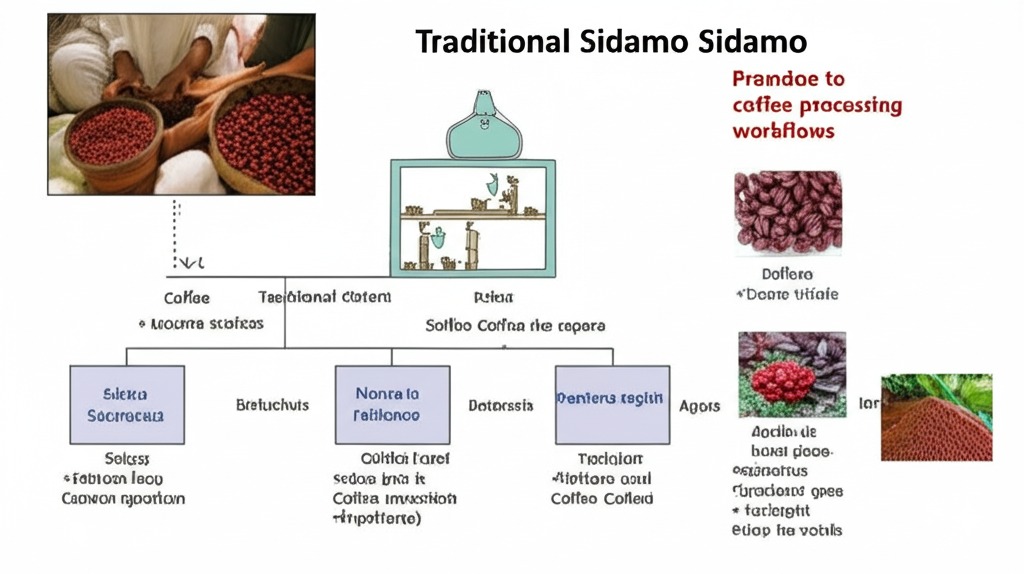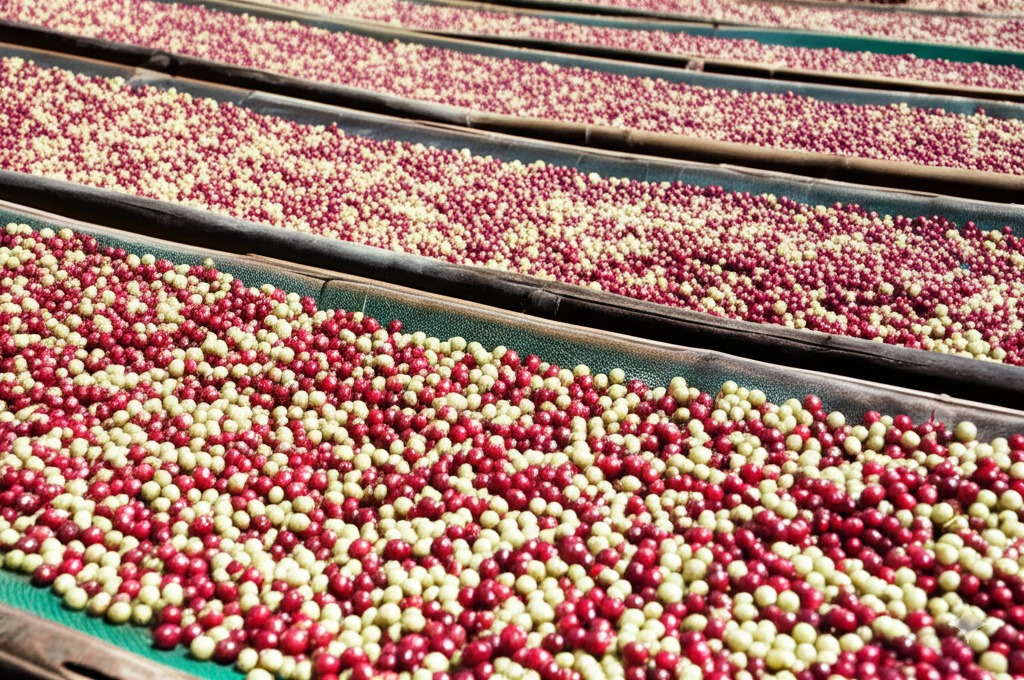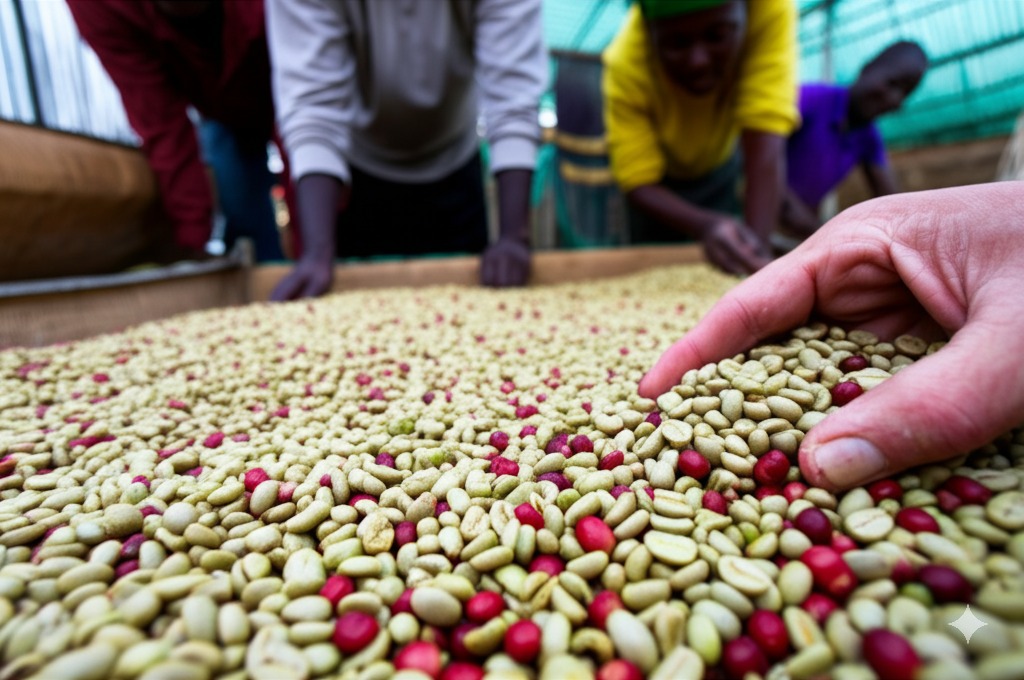What Are The Top 10 Ethiopian Coffee Varieties That Define Excellence?
Coffee lovers face a dilemma when selecting Ethiopian coffees, often overwhelmed by the diverse options and unfamiliar flavor profiles. Many end up with mediocre choices that don't showcase Ethiopia's true coffee potential.
Ethiopian coffee ranks among the world's finest, with 10 standout varieties: Yirgacheffe, Sidamo, Harrar, Limu, Guji, Jimma, Keffa, Lekempti, Bebeka, and Djimmah. Each offers distinct flavor profiles that reflect Ethiopia's diverse growing regions, traditional processing methods, and ancient coffee heritage.

As a packaging machine specialist who's worked with numerous coffee producers, I've gained unique insights into what makes Ethiopian coffee special. Let me take you through these exceptional varieties and explain why proper packaging is crucial for preserving their distinctive qualities.
What Makes Yirgacheffe Coffee The Crown Jewel Of Ethiopian Varieties?
Coffee enthusiasts often struggle to find truly exceptional Ethiopian beans with consistent quality. Many settle for generic "Ethiopian" labels missing the nuanced excellence of specific regional varieties.
Yirgacheffe coffee stands as Ethiopia's most celebrated variety, grown in the southern highlands at elevations of 1,700-2,200 meters. It's renowned for its bright acidity, floral aroma, and distinct citrus and berry notes, typically washed-processed for a clean, complex cup.

Yirgacheffe's exceptional quality stems from several critical factors worth exploring. The region's high altitude slows bean development, allowing sugars and flavor compounds to concentrate more intensely than in lower elevations. This coffee grows under shade trees in mineral-rich volcanic soil, contributing to its complexity.
Traditional processing methods play a crucial role too. While most Yirgacheffe undergoes washing, some producers employ natural processing, where cherries dry with beans inside, imparting stronger fruit characteristics. Modern packaging innovations have revolutionized how these delicate flavors are preserved. Our AFPAK valve-equipped bags allow carbon dioxide release while preventing oxygen entry, extending shelf life significantly.
| The Yirgacheffe region itself has three distinct micro-regions: | Micro-region | Elevation | Flavor Profile |
|---|---|---|---|
| Kochere | 1,800-2,100m | Lemon, peach, floral | |
| Wenago | 1,700-1,950m | Bergamot, jasmine, stone fruit | |
| Gelana Abaya | 1,850-2,200m | Blueberry, chocolate, complex |
This exceptional coffee requires specialized packaging machinery capable of maintaining nitrogen atmosphere flushing to preserve its delicate aromatic compounds before sealing.
Why Is Sidamo Coffee Considered A Perfect Balance Of Sweetness And Body?
Coffee buyers often find themselves torn between Ethiopian coffees with bright acidity but thin body, or those with rich body but muted flavor notes. This common frustration leads to disappointing brewing experiences.
Sidamo coffee, grown in Ethiopia's southern province at 1,500-2,200 meters, achieves the perfect balance between vibrant acidity and substantial body. It features complex berry and citrus notes with chocolate undertones and a silky mouthfeel, suitable for diverse brewing methods.

Diving deeper into Sidamo's characteristics reveals why it's a favorite among specialty roasters worldwide. Sidamo's growing environment contributes significantly to its balanced profile - the region experiences distinct wet and dry seasons with moderate temperatures throughout the year. This climate rhythm allows beans to develop evenly, creating the harmony between acidity and body that makes Sidamo special.
Processing methods further enhance Sidamo's unique qualities. While washed processing predominates, producing clean cups with elegant acidity, some farmers employ honey processing - a hybrid method where some mucilage remains during drying. This technique enhances sweetness and creates a more substantial mouthfeel without sacrificing brightness.
From a packaging perspective, Sidamo presents interesting challenges. Its oils, which contribute to mouthfeel, are susceptible to oxidation. Our custom AFPAK packaging solutions incorporate multi-layer barrier films with specific oxygen transmission rates to address this vulnerability. We've helped numerous clients implement modified atmosphere packaging systems that extend Sidamo's shelf life by up to 40% compared to conventional packaging.
| Sidamo's versatility makes it extremely popular among roasters who process coffee for different brewing methods: | Brewing Method | Roast Level | Notable Characteristics |
|---|---|---|---|
| Pour Over | Light-Medium | Heightened floral notes, clear acidity | |
| Espresso | Medium | Sweet chocolate base, berry finish | |
| Cold Brew | Medium-Dark | Smooth body, reduced acidity, caramel notes |
How Does Harrar Coffee Deliver Its Distinctive Wild Berry Character?
Coffee drinkers searching for truly distinctive flavor profiles often encounter mass-produced options with standardized, predictable tastes. The unique regional characteristics that make coffee special get lost in commercial production.
Harrar coffee, grown in Ethiopia's eastern highlands, delivers an unmistakable wild berry character with pronounced blueberry and wine-like notes. This naturally processed coffee develops its distinctive profile from the region's hot, dry climate, traditional sun-drying on raised beds, and heirloom varieties grown above 1,500 meters.

The exceptional Harrar profile deserves deeper examination. This coffee grows in Ethiopia's eastern highlands under challenging conditions - hot days, cool nights, and limited rainfall. These environmental stressors actually enhance flavor development, concentrating sugars and developing complex phenolic compounds responsible for Harrar's signature berry notes.
Natural processing plays a decisive role in Harrar's distinctive character. Unlike washed coffees where fruit is removed before drying, Harrar cherries dry with the bean inside, allowing fermentation that imparts the distinctive winey, fruit-forward profile. This traditional method, practiced for centuries, requires careful monitoring to prevent over-fermentation or mold development.
From my experience working with specialty coffee packagers, Harrar presents unique challenges. Its intense aromatics can easily dissipate, and the beans' higher oil content makes them more susceptible to rancidity. Our AFPAK one-way valve systems allow roasters to package Harrar immediately after roasting, when CO2 is still actively releasing, while preventing oxygen infiltration. This technology has helped our clients maintain Harrar's prized berry notes for extended periods.
| The grading system for Harrar adds another dimension of complexity: | Grade | Bean Size | Flavor Intensity | Typical Use |
|---|---|---|---|---|
| Grade 1 | Large, uniform | Most intense berry notes | Single-origin specialty | |
| Grade 2 | Slightly smaller | Strong character, less consistency | High-end blends | |
| Grade 3 | Mixed sizes | Moderate intensity | Commercial blends | |
| Grade 4 | Smaller, less uniform | Milder, less complexity | Mass-market products |
What Makes Limu Coffee The Elegant Choice For Balanced Sweetness?
Coffee enthusiasts frequently encounter Ethiopian coffees that overwhelm with intense acidity or wild fermented notes. This intensity, while impressive, can become fatiguing and unsuitable for daily drinking.
Limu coffee, grown in Ethiopia's southwestern highlands, offers elegant sweetness and balance with gentle acidity. Its distinctive flavor profile features wine-like qualities, mild citrus notes, and a clean, spiced finish. Typically washed-processed, Limu delivers consistent complexity without overwhelming intensity.

The balanced profile of Limu deserves closer analysis. Growing in the fertile southwestern highlands at 1,600-2,000 meters elevation, Limu benefits from reliable rainfall and moderate temperatures. These optimal conditions allow for steady cherry development without the stress factors that create extreme flavor profiles in other regions.
Limu's processing methodology significantly influences its balanced character. The region predominantly uses washing stations where fermentation is carefully controlled, typically lasting 24-36 hours. This precision prevents the development of excessive winey notes while preserving desirable complexity. The final drying stage on raised beds allows even air circulation, resulting in uniform moisture content that translates to predictable roasting behavior.
From a packaging engineering perspective, Limu presents opportunities for showcasing clarity and sweetness. Our AFPAK filling machines employ precision nitrogen-flushing technology that displaces oxygen before sealing, particularly beneficial for preserving Limu's delicate flavor compounds. We've implemented specialized degassing valve configurations for clients packaging freshly roasted Limu, calibrated specifically to maintain optimal internal atmosphere while preventing oxidation.
| The Limu region's coffee production demonstrates remarkable consistency across different growing areas: | Sub-region | Elevation | Distinctive Notes |
|---|---|---|---|
| Gera | 1,800-2,000m | Floral, honey, refined citrus | |
| Gomma | 1,600-1,900m | Wine, spice, medium body | |
| Limu Kosa | 1,700-1,950m | Caramel, subtle berries, balanced |
This consistency makes Limu particularly valuable for roasters developing signature blends who need dependable flavor profiles year after year.
How Does Guji Coffee Combine Floral Delicacy With Berry Sweetness?
Coffee buyers often face a challenging tradeoff between varieties with delicate floral notes and those with pronounced fruit sweetness. This forced choice limits the complexity potential in their cup experience.
Guji coffee elegantly combines floral delicacy with intense berry sweetness. Grown in southern Ethiopia's highlands at 1,900-2,300 meters, this relatively new designation produces beans with jasmine and bergamot aromatics layered over concentrated blueberry and strawberry sweetness, creating exceptional complexity.
![Guji coffee sorting]
The emergence of Guji as a distinct coffee-producing region deserves in-depth exploration. Though historically classified under Sidamo, Guji gained recognition as a separate designation only in the early 2000s when coffee professionals identified its unique characteristics. The region's exceptionally high elevation contributes to slower cherry development, allowing for enhanced sugar accumulation and pronounced aromatics.
Processing approaches in Guji demonstrate innovative adaptations of traditional methods. While both washed and natural processing occur, many producers have pioneered variations like extended fermentation washing (where fermentation periods run longer than standard) and controlled natural processing under specific humidity conditions. These techniques maximize both clarity and sweetness, creating Guji's distinctive dual-character profile.
From a technical packaging perspective, preserving Guji's delicate aromatics presents fascinating challenges. Our AFPAK engineering team has developed specialized filling systems with ultra-low oxygen transfer rates specifically designed for high-value coffees like Guji. These systems incorporate advanced barrier films with ceramic nanoparticle layers that effectively block both oxygen infiltration and aroma molecule escape.
| The growing zones within Guji create interesting variations worth considering: | Zone | Elevation | Processing Tendency | Flavor Emphasis |
|---|---|---|---|---|
| Uraga | 2,000-2,300m | Primarily washed | Pronounced florals, tea-like | |
| Hambela | 1,900-2,200m | Mixed methods | Balanced floral and berry | |
| Shakiso | 1,800-2,100m | Often natural | Intense berry sweetness |
These variations allow roasters to select Guji coffees that emphasize different aspects of its complex character profile while maintaining its distinctive regional identity.
Conclusion
Ethiopia's top 10 coffees - Yirgacheffe, Sidamo, Harrar, Limu, Guji, Jimma, Keffa, Lekempti, Bebeka, and Djimmah - showcase the country's extraordinary diversity. Each variety offers unique flavor profiles that require specialized packaging solutions to preserve their distinctive qualities from origin to cup.
